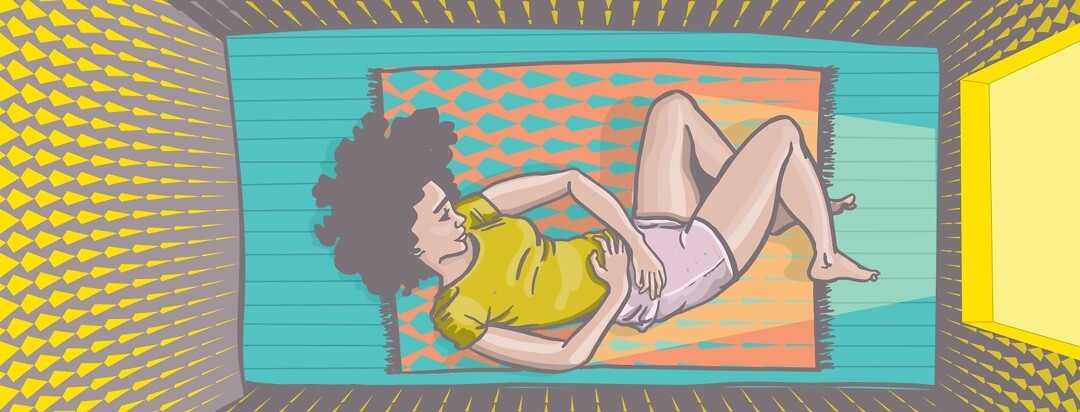Reduce Emergency Room Visits: Managing Abdominal Pain
Pain management when you have bladder cancer can be a real challenge. Recent research shows that people with bladder cancer are more likely to visit an emergency room for gastrointestinal (GI) pain than people with other types of cancer. Learning to ease your GI pain and symptoms with at-home tools may prevent you from an emergency room visit.1
Higher rates of GI pain for people with bladder cancer
A study released in June 2021 looked at people with cancer who visited the emergency room. The researchers looked at information from about 4,5000 hospitals for 1 year.1
The researchers found people with bladder cancer are more likely than people with any other type of cancer to check into an emergency room for GI pain. Data showed that more than 14,000 people with bladder cancer visited an emergency room during the 1-year period. Nearly 2,300 of them had GI pain.1
The link between GI pain and bladder cancer
The GI tract includes the hollow organs and tubes that food and liquids travel through when they are swallowed, digested, absorbed, and expelled from the body. It runs through the:2
- Mouth
- Esophagus
- Stomach
- Small intestine
- Large intestine
- Anus
Most commonly, GI pain is located in the abdomen near the stomach or intestines. People with bladder cancer may also have other GI symptoms like bloating, nausea, vomiting, and diarrhea. 1, 3
Pain can come from the tumor itself. It may also be caused by the treatment used for bladder cancer. People with bladder cancer that has spread to areas like the stomach lymph nodes or liver may also have abdominal pain.3
Methods for managing GI pain
While some of these approaches may seem simple, they can be effective for pain relief. To ease GI discomfort, you can try:4
Applying cold or heat. If you have stomach pain or bloating, try applying a warm compress to increase blood flow to your abdomen. On the other hand, an ice pack may feel better if your pain is from inflammation. A cold compress can also help ease nausea.
Exercising. Low-impact activities like walking, swimming, bicycling, and practicing yoga can interrupt your GI pain cycle. Exercise even decreases other GI symptoms like bloating. Improved physical fitness is a good way to prevent pain from a lack of mobility.
Seeing a physical therapist or occupational therapist. A physical therapist can give you exercises to ease GI discomfort. An occupational therapist will help you think about doing everyday tasks in a way that will not increase your stomach pain.
Learning mind-body techniques. Breathing exercises, meditation, or mindful activities such as yoga or tai chi can make you feel more in control of your reactions to pain. For example, you may find that frequently pausing for a basic breathing exercise could help ease your discomfort. Meditation can also help ease nausea.
Using a biofeedback machine. Along with your mind-body techniques, you may want to use a biofeedback machine. This can help you visualize your heart rate or blood pressure. The machine can be another tool to help focus your mind away from your GI pain.
Listening to music. Listening to your favorite song or soothing classical music can help distract you from GI pain. The right song might even get you dancing. You already know the benefits of exercise for pain relief!
Scheduling a therapeutic massage. While you probably do not want to have your stomach massaged if you have abdominal pain, a massage could help ease overall tension in your joints and muscles. If you can relax more during and after a massage, you may find that your pain decreases.
Talk with your doctor
Your doctor should be your pain management partner. Talk to them about the GI pain and symptoms you are experiencing. They may have more ideas for at-home GI pain management tips. Relieving pain is an important part of your overall cancer care.

Join the conversation